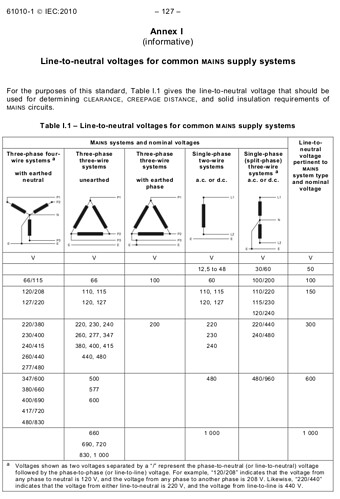Also is there any link to calculate this as per the UL and other industrial standards
Hi, @sdg123
Have you Googled;
high voltage pcb tracks spacing creepage ul standard
There are numerous sources and calculators.
Tom.... ![]()
![]()
![]()
![]()
Just humour me … why do you want such voltages on your PCB ?
You need to run these questions by the UL lab that will be testing your device.
I'll wait for the UL report ![]()
If you are putting a product through regulatory approvals, you can afford to buy the relevant safety standard and consult with UL. The actual spacings requirement depends on many factors.
The pollution degree- is the board in dirty, dust environment or moisture present? Is the product grounded on the secondary side? What altitude?
Because mains voltages are subject to transients, extra spacing is demanded in the safety standards. If the power source is close to the distribution network (transformer) Overvoltage Category III or IV applies.
Many Smart Meters arced over and caught fire (house included) because they are in Cat. IV and bad designs are out there.
Attached shows mains power system types which implies you are in the nominal 300V range.
Generally speaking, IEC 61010 for 300V Cat. III is 3mm (Cat. IV is 5.5mm) on PC boards, and that or double that to the secondary side depending on the product's safety strategy i.e double insulated.
Cat. IV 300V is an 6kV test so any voltage sense resistors and terminal blocks etc. need to take that. There is also spacings on PC board inner layers if you are multi-layer.
I'm quoting numbers out of a hat only so you have a rough idea - UL engineers will advise accordingly. I overdesign because transients can be more than average.
I really doubt you can use FR4 board material at those voltages.
FR-4 is good to pretty high voltages- if you have the spacing and no dirt/moisture. I've seen 1,000V work fine for long term insulation stress on VFD motor drives.
There is also special high voltage FR-4, with a higher rating. Potting compounds can help and be easier and give a smaller PC board size better for a given voltage rating. Conformal coating is not much use because bare part leads are exposed.
But anything connected to mains at the service or panel must be a proper design, because any error in fusing/creepage/clearances and the high fault currents will cause a fire.
Hi,
I think we had better wait for @sdg123 to respond with more details about the project.
Its been 4 days, he/she might be waiting for that elusive email notification. ![]()
![]()
![]()
Tom... ![]()
![]()
![]()
![]()
This topic was automatically closed 180 days after the last reply. New replies are no longer allowed.
